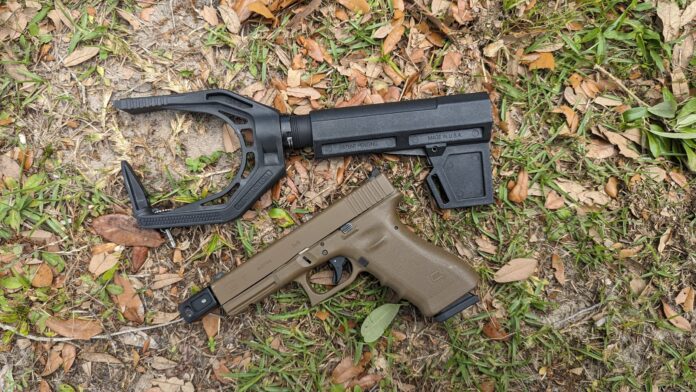
Welcome to the PDW project. Today, we are looking at the second entry in the series, and I’m not quite sure what to call it beyond the braced pistol. What I mean by braced pistol isn’t an AR pistol or similar large format pistol. It’s a handgun with a brace attached. In this scenario, we are using a Glock 17 combined with an Endo adapter and Shockwave brace. This is a quick attach and quick detach system that’s easy to use and potentially very promising as a defensive system. The brace pistol design seems to be a promising entry into the world of civilian PDWs.
Benefits of the Braced Pistol
This concept has several benefits that outweigh the downsides of your typical PDW. Quick-attach pistol systems discard the need to carry a separate gun as your PDW. You can simply carry the brace device in a separate bag and your handgun in your standard holster.
This alleviates the hassle of constantly keeping a bag with you and your PDW on your back. There is no danger in leaving your quick-attach brace design in your backpack and in your car, office, etc., if you have to go to the bathroom.
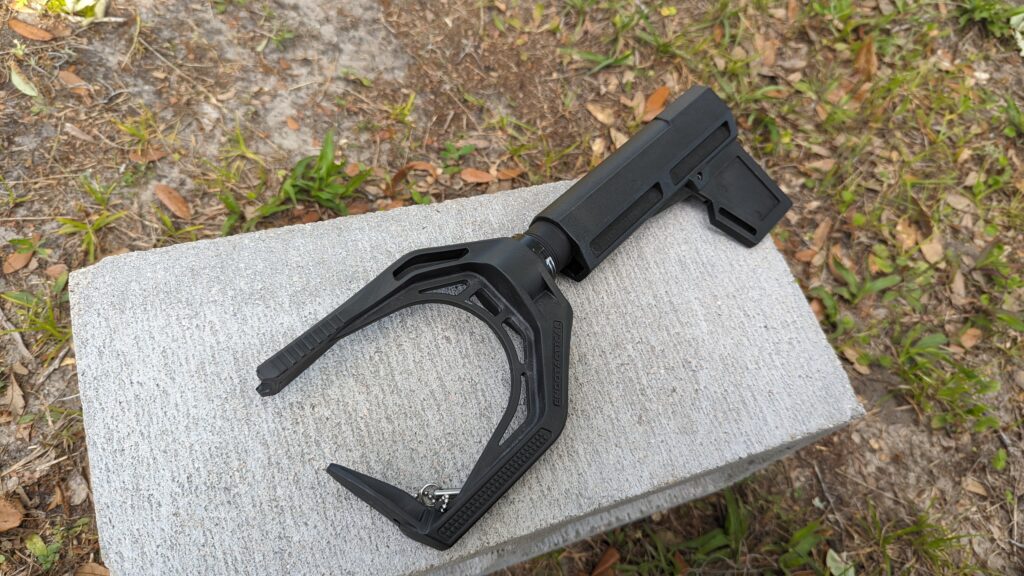
Next, it’s very affordable. It costs less than a couple hundred bucks to get this setup with the brace and adapter. That’s pretty affordable for the PDW realm. It’s also effortless to conceal. The Endo adapter and brace fit into a backpack, laptop bag, and, heck, some center consoles.
If it comes down to needing a PDW option, the braced pistol means you’ve already engaged with your pistol and hopefully created distance, found cover, etc. This doesn’t require you to pick from your CCW or your PDW. You’ll draw your CCW and can switch to the brace pistol design when you see fit.
I also found that in testing, it was very easy to use with one hand. If the other hand is occupied, you can still make solid hits on target.
Downsides of the Braced Pistol
The biggest downside is the time to attach and engage with the device. While you can always engage with your handgun, it can take several seconds to retrieve your brace design and get it in action.
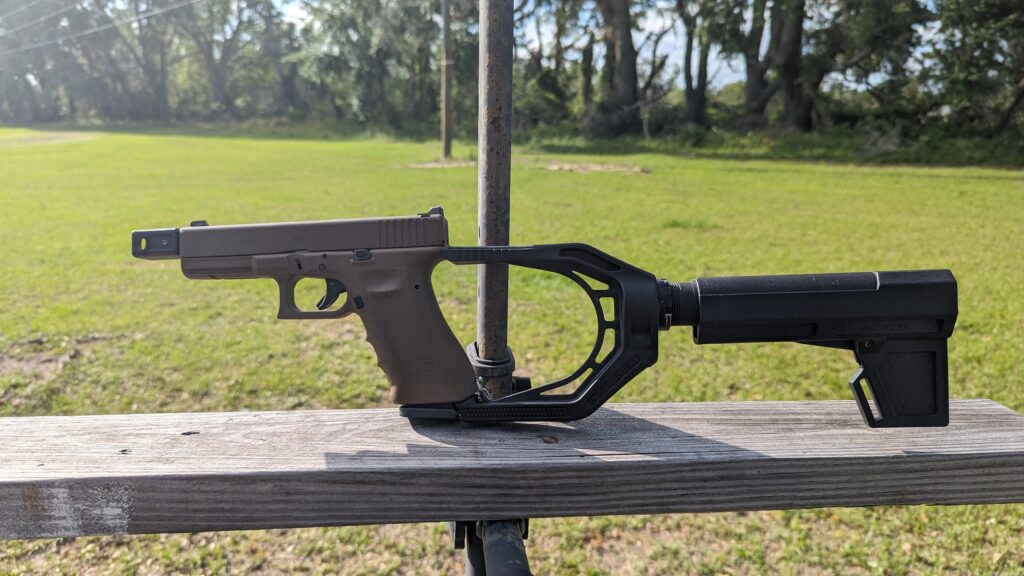
Another downside to the Endo design is that it only works with Gen 3 full-sized guns. No Glock 19s or other gun options. There is the USAOneShot device, but I can’t speak to its design or quality since I’ve never had hands-on with one.
In Action
I ran the braced pistol concept through a number of drills to test its overall effectiveness. I do have a Gen 3 Glock 17, but it’s not optics-ready. Not having a red dot is a serious downside. I think my results would have improved with a red dot, but that wasn’t an option at the time of testing.
Deployment
For a deployment test, I wanted to see how fast I could attach the brace and fire a single accurate shot at 25 yards. I stashed the system in a Vertx backpack but started with the handgun drawn. I figured in a realistic situation, I’d already have my handgun drawn and ready.

My start position was Glock deployed, aiming at the target. I used a shot timer and practiced deploying the brace several times using various methods. My fastest time to get the brace attached and an accurate shot on target was about nine seconds in total.
Testing Control
One of the big benefits of the idea of a civilian PDW is to provide a weapon that’s easier to control and shoot than a handgun. To do so, I fired several modified Bill Drills. My target was still the A-Zone, but I fired the drill at 15 yards rather than seven. It took a little trial and error to figure out the best way to grip and engage with the tool. But once I figured it out, I was able to eke out a few sub-2-second Bill Drills.

The brace pistol system is much easier to control and keep on target during the recoil impulse. It makes tracking the sights easier, which results in faster shots on target. I recorded these times without any prior practice, and I believe with some dedicated training, you could shrink that time considerably.
Accuracy Testing
Another big advantage of a PDW is accuracy. Handguns are tough to shoot accurately at the range, and when adrenaline is pumping, it’s even harder. Add in a moving target, and then we have a pretty rough situation for a handgun. A braced handgun could improve accuracy substantially compared to a pistol.
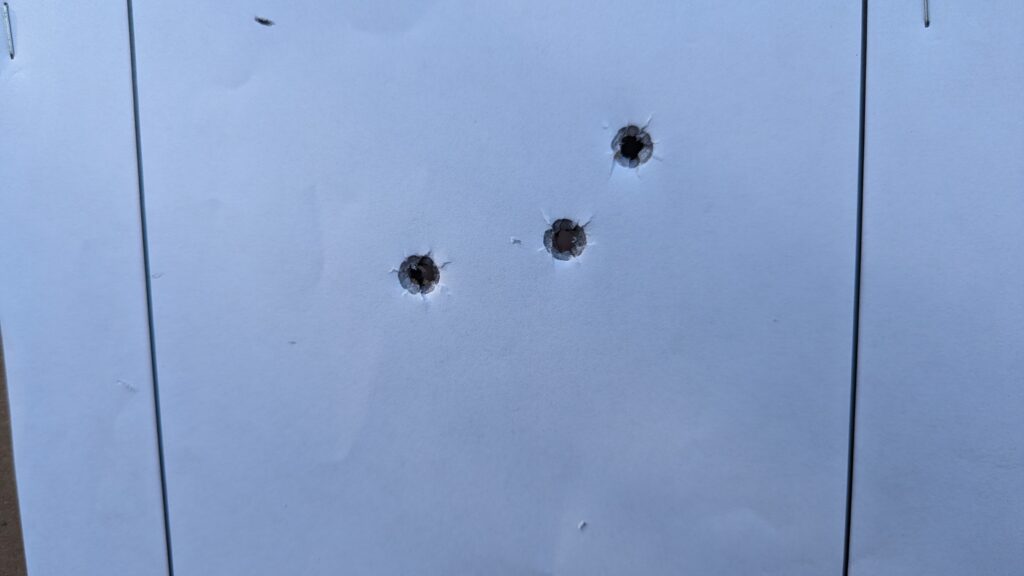
For the first test, I tried my hand at slow-fired shots on an IPSC A-zone. I fired standing with no support and fired several three-shot groups. I managed to make some decent groups with accurate shots on target, even with iron sights. However, I do think a red dot would increase my accuracy substantially.
I backed up to 50 yards and shot at a steel IPSC target. The iron sight covered the entire thing, and my hit ratio with the braced pistol was around 50%. That’s not as accurate as I’d want. This is where the red dot would really be handy. With a red dot, I can hit this target with a pistol easily. However, even with irons, a 50% hit ratio isn’t bad. I popped the brace off and tried with just the handgun to achieve a 0% hit ratio with five rounds fired.
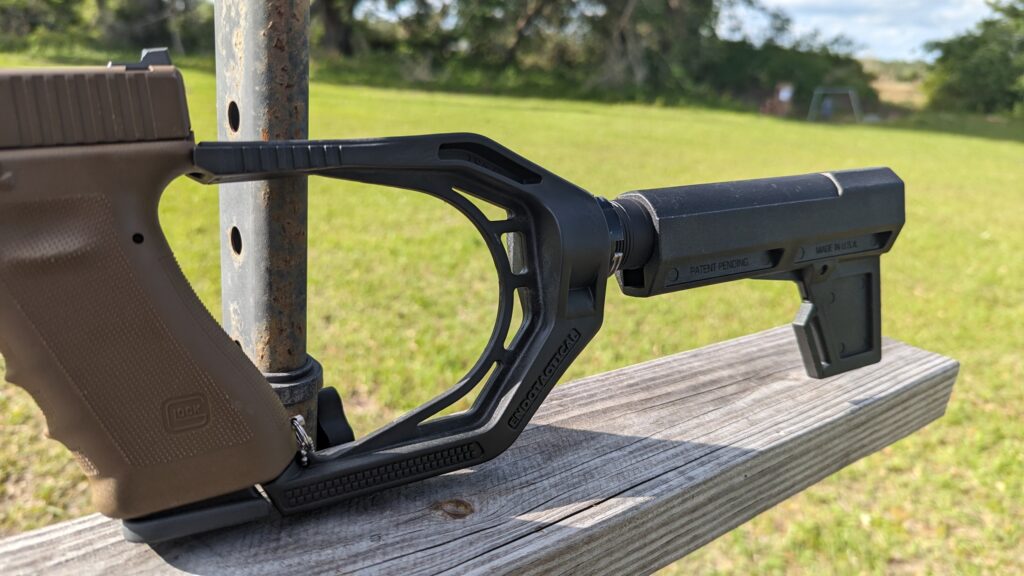
The Braced Pistol PDW
Overall, I think the braced pistol has a lot of potential. I think a more universal design like the USAOneShot would work substantially better than the Endo. The Endo is great but doesn’t offer much versatility and is tough to find. This concept very clearly needs a red dot, and I think a red dot might be part of the PDW requirement at this point. The additional benefits are very useful.
While it can be slow to deploy, its concealability and the fact that it can attach to your CCW firearm make it a viable option for many people. This might be the best overall budget PDW option.



